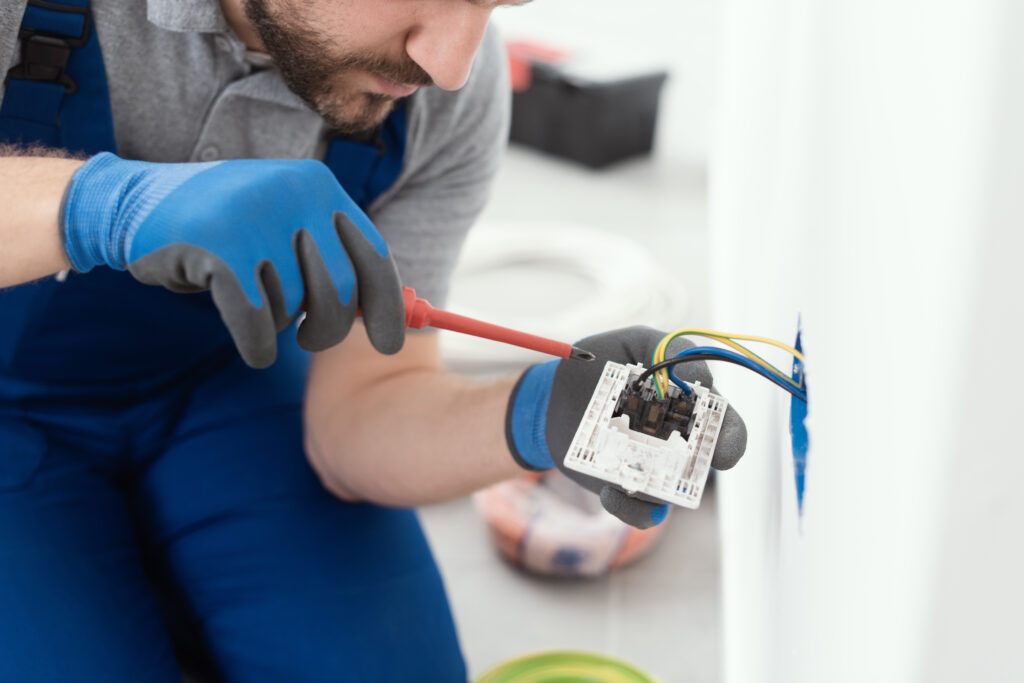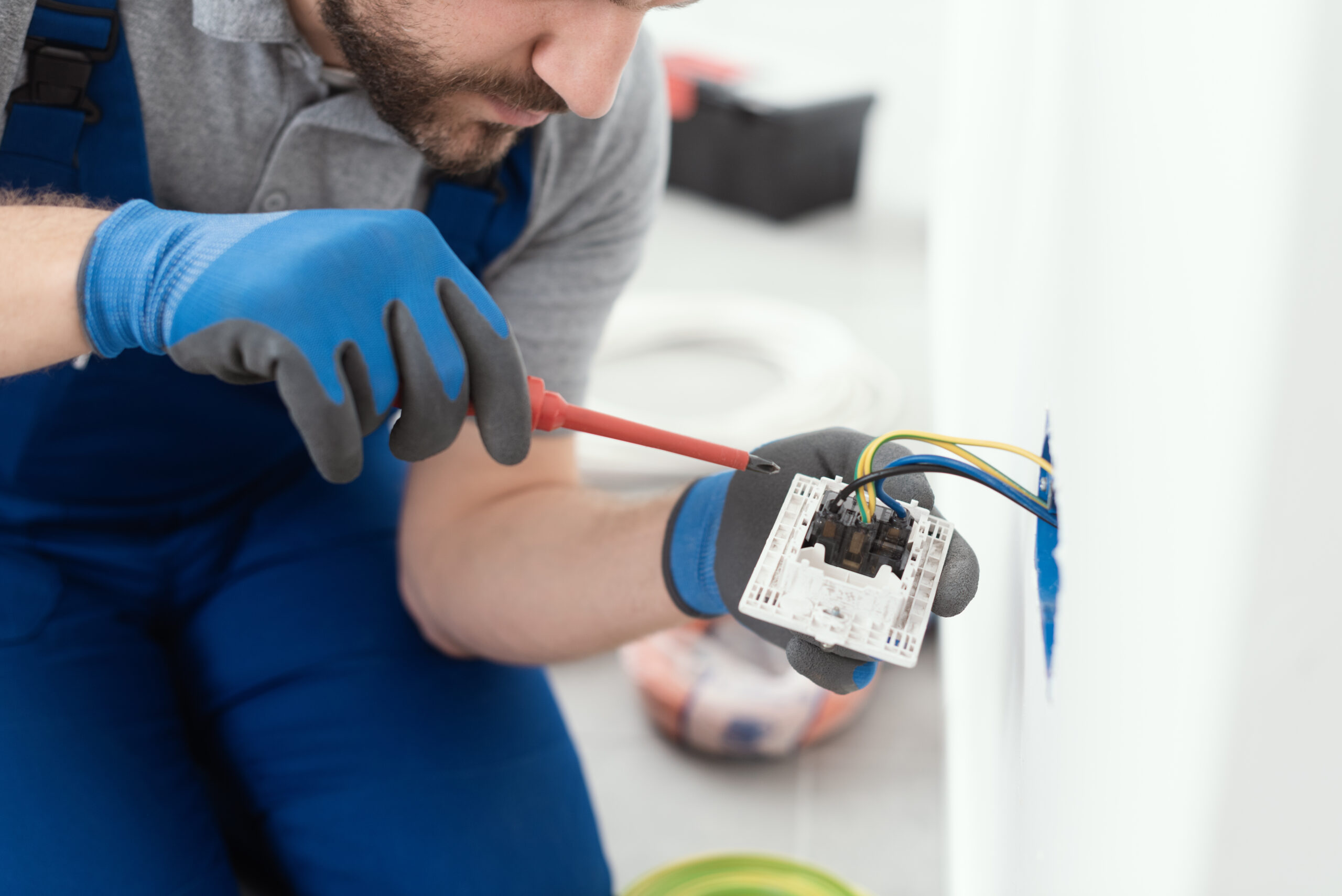Is Your Home’s Electrical System Sending You Warnings? Here’s How to Spot Trouble Before It Sparks
Your electrical system is kind of like the silent partner in your home. Always there, always working to keep your lights on, your fridge running, your phone charged. You usually don’t think about it—until something weird happens. A flickering light here or a strangely warm wall outlet there, and suddenly you’re Googling things like “is this normal or is my house about to catch fire?” So let’s break this down. What’s going on behind your walls, how does your electrical system work, what are the tell-all signs of a problem, and—most importantly—where does a home warranty fit into all of this?
Understanding Your Home’s Electrical System
Let’s start with the basics. Your home’s electrical system distributes power from the main utility grid to all the switches, outlets, appliances, and lighting fixtures you rely on every day. At the heart of the system is your electrical panel—also called a breaker box—which receives high-voltage electricity and breaks it down into smaller circuits. These circuits travel like organized little highways into every corner of your home, bringing power to wherever it’s needed. Each one is protected by a circuit breaker that trips when things get a little too amped up—in other words, when there’s a short circuit or an electrical overload. Pretty smart, right?
Signs Your Electrical System Might Be Asking for Help
Most folks miss the early warnings of an electrical issue because, well, modern life is busy. But ignoring the warning signs is kind of like ignoring a check engine light. Like, yeah, it might be nothing… until it’s very much something.
Flickering lights are one common red flag. If they pulse even when you aren’t using heavy-duty appliances, that could mean a loose connection or even a deteriorating circuit. Warm or discolored wall outlets are another one—seriously don’t ignore those. Your outlets should never be hot. Ever. That could point to internal arcing, faulty wiring, or overloaded circuits, and all three are big yikes for potential electrical fires.
Also, do your breakers trip often? Occasional tripping is fine—it’s the breaker doing its job—but if it’s a weekly struggle, that’s your system waving a red flag. Buzzing sounds, burning smells, sparking… these aren’t just quirky character traits of an old home. They’re warnings.
Why Electrical Problems Are So Sneaky (and Potentially Dangerous)
Here’s the thing—unlike a leaky faucet or a rattling HVAC unit, electrical issues often show no signs until the situation is dicey. You could have outdated aluminum wiring, amateur handiwork from a previous homeowner, or moisture where it shouldn’t be, and you’d never know until things get smoky. And because electricity doesn’t exactly announce its problems with a bullhorn, homeowners often delay maintenance or inspection. That’s a bit like ignoring a rattlesnake because it’s sleeping.
The National Fire Protection Association says electrical issues are a leading cause of home structure fires. That’s serious business. Not to mention, haphazard DIY fixes—not totally uncommon—make the situation worse. Listen, I love a good weekend project like anyone else, but rewiring your kitchen shouldn’t be one of them unless you’re a licensed electrician. Just saying.
Benefits of Addressing Electrical Issues Early
Getting on top of electrical problems right out of the gate isn’t just about safety (though that’s obviously a major win). It’s also about cost savings. Proactive maintenance can prevent full system failures, reduce energy waste, and safeguard your expensive appliances from electrical surges and inconsistent currents. Plus—and this is an underrated bonus—it gives you peace of mind. No one wants to live with that quiet background fear of “what if the wiring in that wall is iffy?”
If you’re planning to sell your home down the line, having a well-maintained electrical system is going to be a solid boost in buyer confidence. No one wants to inherit an electrical time bomb. You know?
What a Home Warranty Covers When It Comes to Electrical Systems
Ah yes, let’s talk home warranties. Specifically the good ones—like what Armadillo offers. A home warranty can cover key components of your electrical system, including wiring, breaker panels, switches, outlets, and sometimes even fixtures, depending on the plan. That means if something goes wrong and it’s not, like, user error (don’t blame the hair dryer, Karen), a warranty could help cover the repair or replacement costs. Imagine not having to eat the entire bill for replacing a fried circuit or worn-out breaker panel. Big relief.
Not every plan is alike, though, so it’s worth checking the fine print. Like, seriously, always check what defines “normal wear and tear.” But done right, a home warranty gives you a safety net that makes electrical glitches way less scary—and far less devastating to your wallet.
When To Call an Electrician vs. When To Use Your Warranty
This one’s all about reading the room—or the panel. If your lights just flickered once during a storm, sure, maybe keep an eye on it. But if you’re seeing multiple warning signs, weird smells, outlets that shock (yes, that happens), or consistent breaker trips, get a pro in there. A licensed electrician can assess the issue, pinpoint the wiring problem, or determine if your home just wasn’t built for the demands of modern life (spoiler alert: a lot weren’t).
If your home warranty includes electrical coverage—and if you’re with Armadillo, it can—your next move after the electrician confirms the issue might be to initiate a claim. That’s your golden ticket to financial relief. But again, follow the protocols. Document everything. Take photos. Get written diagnosis from the technician when possible. These steps help when it’s time to work with your warranty provider. And it helps the provider help you. Symbiotic, really.
Let Armadillo Be Your Electrical Backup Plan
Look, life’s already packed full of unpredictable stuff. Your home’s electrical system doesn’t have to be one of them. With Armadillo, you’ve got a crew in your corner that’s ready to step in when sparks fly—literally. Whether your breaker box is stuck in the ’80s or you just want to sleep better at night knowing that a potential wiring issue won’t blow your savings, we’ve got you covered. Learn more about how an Armadillo home warranty can protect your electrical system and more at www.armadillo.one, or take two quick clicks to start building your coverage here: Get Your Plan. Electrical peace of mind? Yeah. That’s just smart.


























